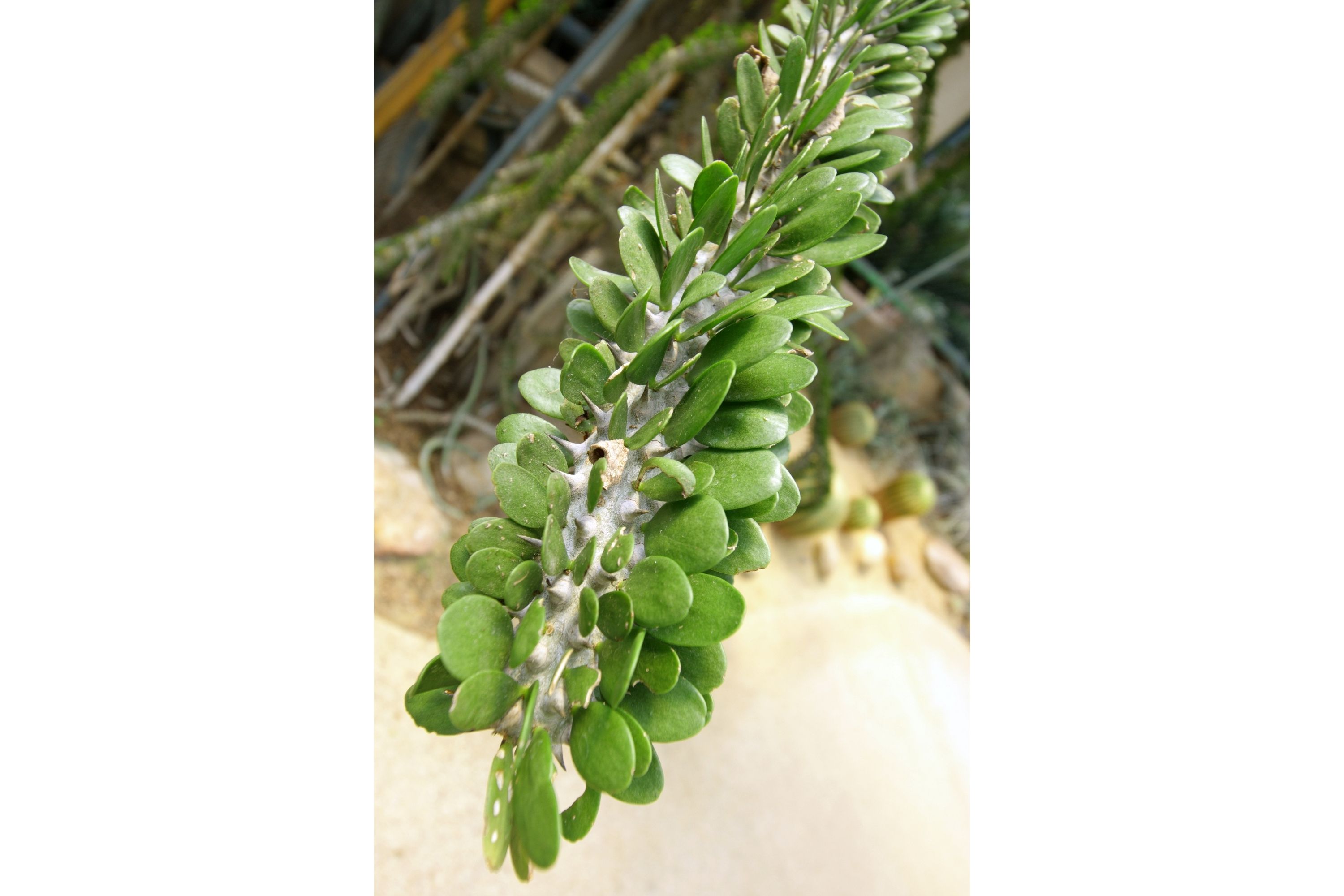Madagascar ocotilo
(Alluaudia procera)

Description
Alluaudia procera, or Madagascar ocotillo, is a deciduous succulent plant species of the family Didiereaceae. It is endemic to south Madagascar. This plant is a spiny succulent shrub, with thick water-storing stems and leaves that are deciduous in the long dry season. Although strikingly similar in appearance, it is not closely related to the ocotillo, Fouquieria splendens of the Sonoran Deserts in North America. Young alluaudias form a tangle of stems that last for several years, after which a strong central stem develops. The basal stems then die out, leaving a tree-like stem that branches higher up on the main trunk. Like other members of family Didiereaceae, the leaves of Alluaudia, produced from brachyblasts similar to the areoles found in cacti, are small, appear single and are accompanied with conical spines. Its flowers are unisexual and radially symmetric. The Didiereaceae comprise 11 species divided into 4 genera, of which the largest is Alluaudia (six species). Alluaudia has been subdivided into the 2 sections Alluaudia and Androyella. In this way, Alluaudia procera has two sisters, Alluaudia ascendens and Alluaudia montagnacii. Based on molecular phylogeny conducted Alluaudia, Alluaudiopsis, and Didierea from the family are all supported as monophyletic. Relationships within the genus Alluaudia are relevant to the evolution of polyploidy within the family. Researchers haven't figured out where the family Didiereaceae originates. However, the nearest relative of the Didiereaceae, Calyptrotheca somalensis, is endemic to East Africa, from which the island of Madagascar separated 100 million years ago. Thus, the Didiereaceae may have originated from the dispersal to Madagascar of a Calyptrotheca-like East African ancestor. Alluaudia is a genus of flowering plants in the family Didiereaceae. There are six species, all endemic to Madagascar. Most occur in the southwestern subarid forest-thicket vegetation of the island. Species of Alluaudia are dioecious, with male and female flowers on separate plants.Spines are arranged around the leaves as a defense against herbivores. The spines are several meters above the ground, and probably evolved in response to herbivory by now-extinct lemurs, such as Hadropithecus. Several lemur species living today feed heavily on Alluaudia, such as the ring-tailed lemur (Lemur catta) and the white-footed sportive lemur (Lepilemur leucopus). Alluaudia is a genus of flowering plants in the family Didiereaceae.
Taxonomic tree:







